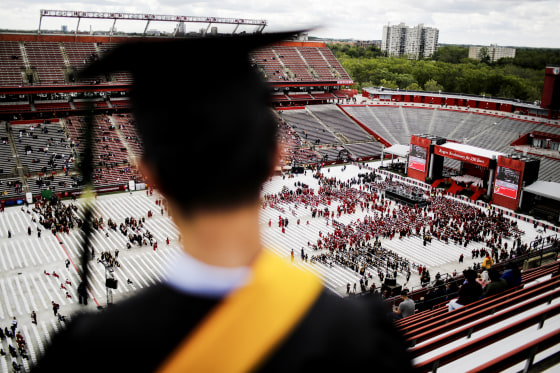
The election showed voters are increasingly split by education level and angry about the economy even as college costs ease.
This “diploma divide” is now a
defining feature of American politics
. It comes at a time when earning a degree remains among the surest paths toward a higher income and when the costs of embarking on it are falling. But many don’t seem to notice.
The net costs students pay for four-year degrees have been declining for years,
College Board data
shows. When adjusted for inflation, in-state students now pay an average of $2,480 in tuition and fees at public four-year colleges this academic year, down 43% from a peak of $4,340 in 2012-13. At pricier four-year private institutions, the net tuition and fees students pay has declined a more modest 15%, to $16,510 from a 2006-07 peak of $19,330.
State and local government funding per student has been growing or holding steady since 2012, the data shows, helping drive costs lower. And institutional grant aid rose by an inflation-adjusted $19.6 billion between the 2013-14 school year and 2023-24. Yet only a quarter of adults see a college degree as critical to landing a well-paying job,
a Pew survey
this year found, and nearly half say that’s less important today than it was two decades ago.
Note: Thank you for visiting our website! We strive to keep you informed with the latest updates based on expected timelines, although please note that we are not affiliated with any official bodies. Our team is committed to ensuring accuracy and transparency in our reporting, verifying all information before publication. We aim to bring you reliable news, and if you have any questions or concerns about our content, feel free to reach out to us via email. We appreciate your trust and support!
